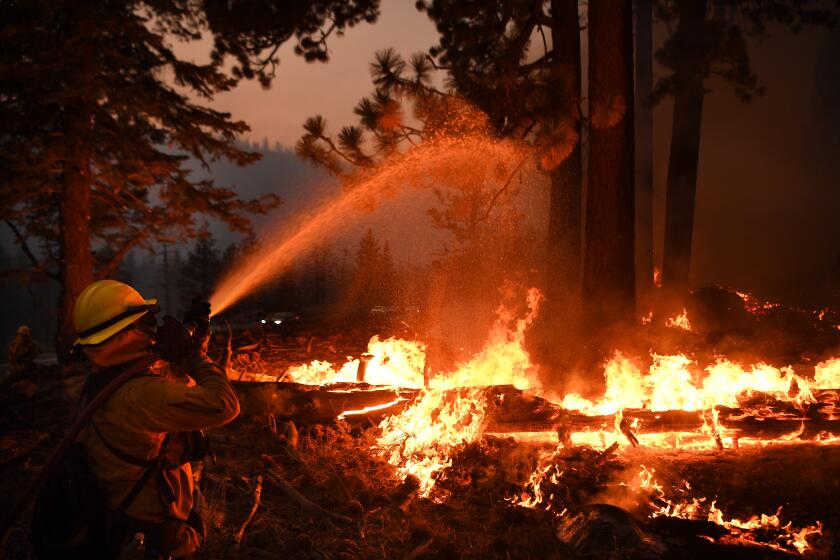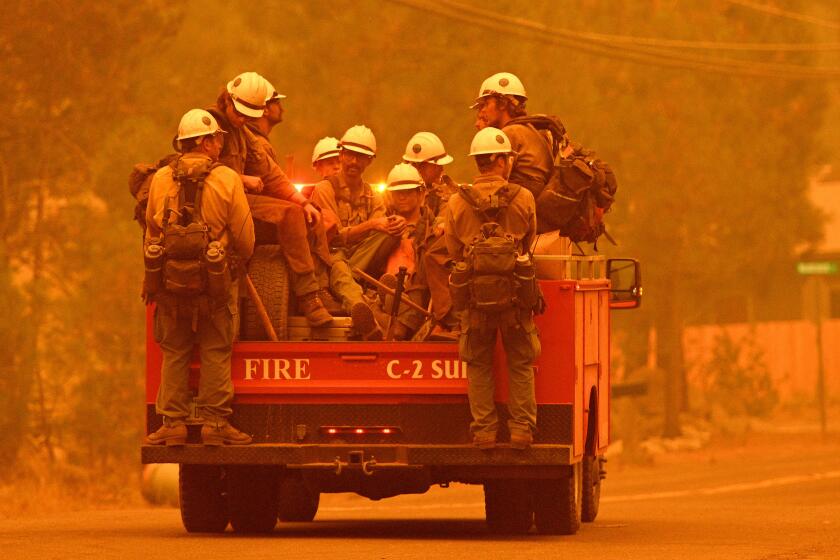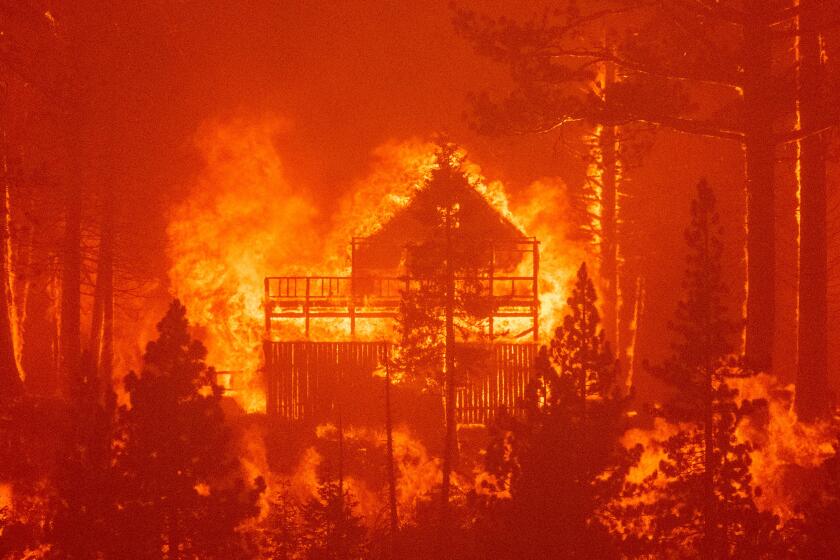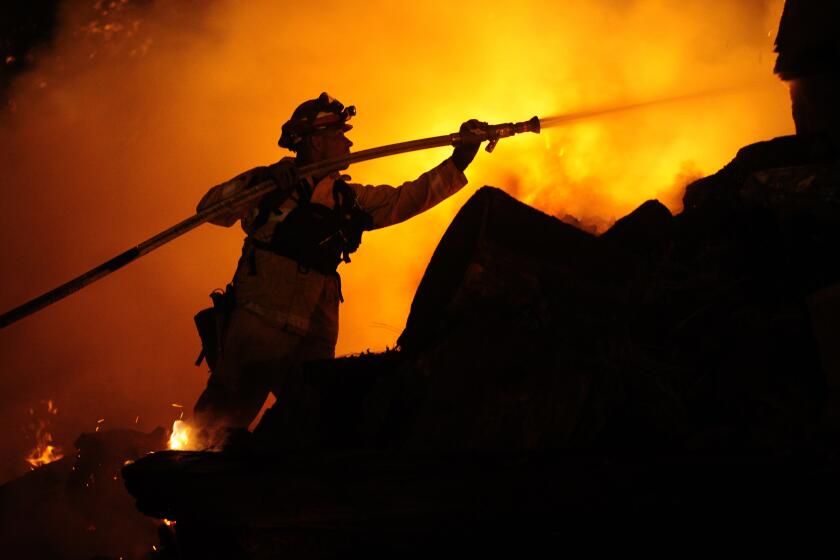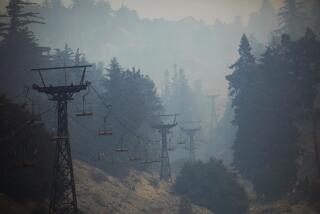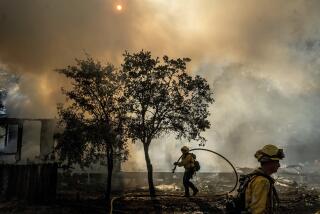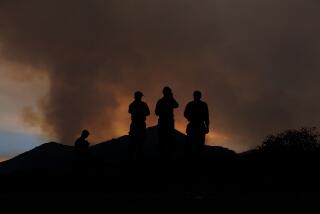‘We have been preparing for this’: Tahoe officials say they’re ready for wildfire
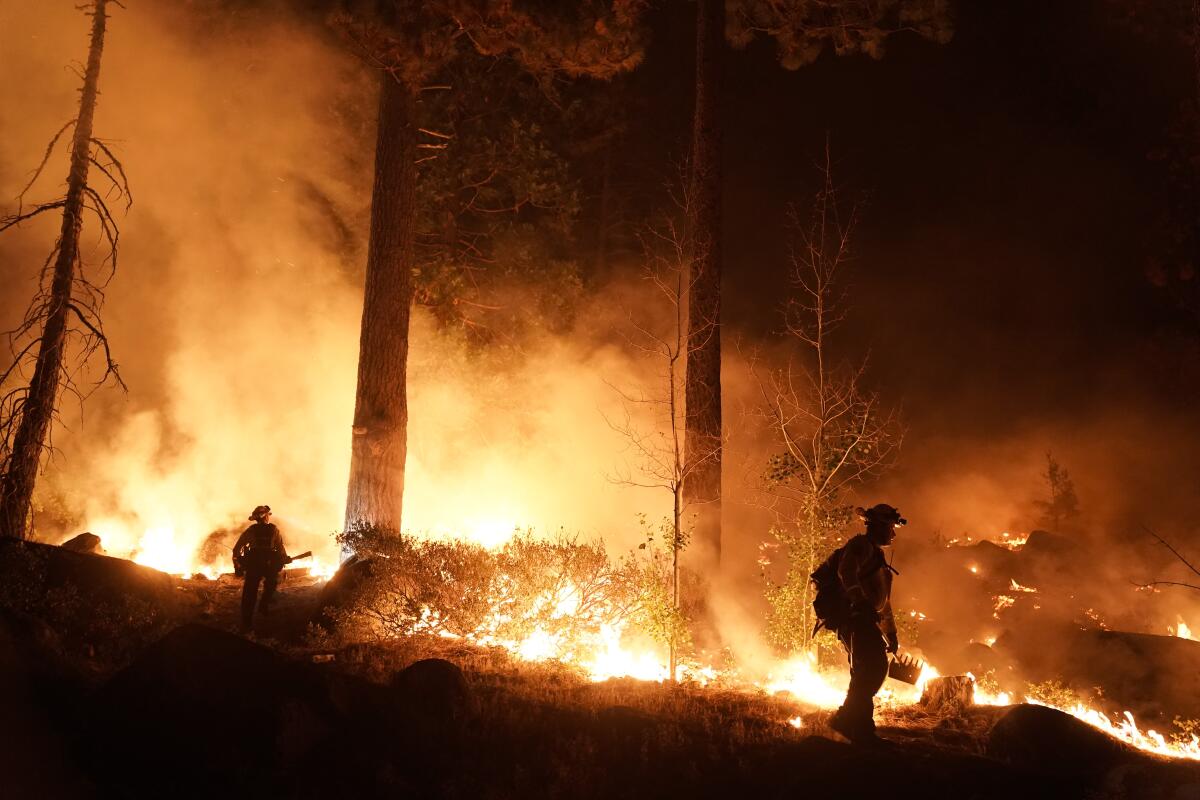
Evacuation centers are at capacity. Large portions of Highway 50 are shut down. Thousands of residents have fled their homes.
But officials on the front lines of the the raging Caldor fire insist they are ready for what may come in the following days — even as the wind-whipped fire makes it way into the Lake Tahoe Basin.
“We have been preparing for this firefight in this area,” said Capt. Brian Newman of the California Department of Forestry and Fire Protection. “We have been planning and preparing, and we’ve ordered resources to deal with the impact of the fire that came into Lake Tahoe.”
Thousands rushed to leave South Lake Tahoe as the resort city came under an evacuation order due to the Caldor fire.
Those plans include hundreds of California National Guard soldiers and U.S. Army personnel who have been deployed to battle the blaze. More than 3,000 firefighters from Cal Fire, the U.S. Forest Service and other groups have already been assigned to the fire.
Forest Service officials on Monday also announced the closure of all national forests in California to protect firefighters and prevent further conflagrations. The closures begins at 11:59 p.m. Tuesday, and ends at the same time Sept. 17.
A wildfire in South Lake Tahoe would not only threaten lives and homes; it would also move faster, burn hotter and be significantly harder to fight, experts say.
Although there are more than a dozen large wildfires burning across the state, Cal Fire chief Thom Porter last week said the Caldor fire was the top firefighting priority in the nation.
“It is that important,” he said. “It is knocking on the door to the Lake Tahoe Basin.”
The fire had grown to more than 190,000 acres Tuesday, with nearly 500 structures burned and 33,000 threatened. It was 16% contained.
Strong winds helped fan the flames, with Newman reporting an “active fire front” near Echo Summit, not far from where the Sierra-at-Tahoe ski resort was reported to be in flames.
Winds also sent embers flying into the Tahoe Basin, and by Monday evening the fire had already made its way into Meyers and Christmas Valley, Newman said.
Cal Fire spokesman Chris Anthony said federal, state and local fire and law enforcement agencies “have been working diligently to prepare Tahoe for this exact scenario” since the Angora fire of 2007 — another wind-driven wildfire in El Dorado County that spurred evacuations and destroyed more than 200 homes.
“We knew it could happen, and we spent millions of dollars and thousands of hours on public education, evacuation planning, community meetings, defensible-space inspections, shipping programs, home-hardening outreach, fuels-reduction projects and prescribed fire and forest health projects,” he said.
The Caldor fire has also changed the view of fire risk in Lake Tahoe.
Yet the Caldor fire’s behavior has been anything but predictable. Only days ago, crews thought they had turned a corner on the fire — only to be met with strong winds and extreme dryness that forced those gains to slip away.
Porter said the Caldor fire and the nearby Dixie fire are the first to have burned from one side of the Sierra to the other.
“Two times in our history and they’re both happening this month,” Porter said. “So we need to be really cognizant that there is fire activity happening in California that we have never seen before.”
Crystal Kolden, a fire scientist at UC Merced, noted that an “urban conflagration” in the South Lake Tahoe area would move faster, burn hotter and be significantly harder to fight than a wildland fire, as homes and other structures would provide additional fuel and produce “tremendous embers.”
“You’ve got this potential for it to really start jumping from building to building to building, and it’s just a completely different beast and they can’t fight it,” she said.
The Caldor fire is moving toward Nevada, prompting evacuations, while firefighters in the South Lake Tahoe area try to “herd” flames away from homes and structures.
Kolden said the likelihood of the fire moving into Tahoe was “feeling pretty inevitable” as crews were essentially moving into triage mode.
She noted that the fire’s significant smoke could make aerial operations difficult, and that there are thousands of structures in the lakeside area that would potentially need to be defended.
“I really hope that I’m wrong about this, and they get a lucky break with the weather,” she said.
“But right now, the weather does not really look like it’s cooperating, and this fire has so much energy that it’s going to be really tough to try to control it in what are some of the most challenging conditions you could possibly imagine.”
More to Read
Sign up for Essential California
The most important California stories and recommendations in your inbox every morning.
You may occasionally receive promotional content from the Los Angeles Times.
